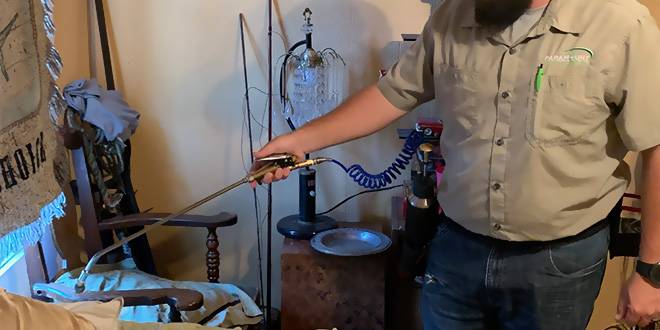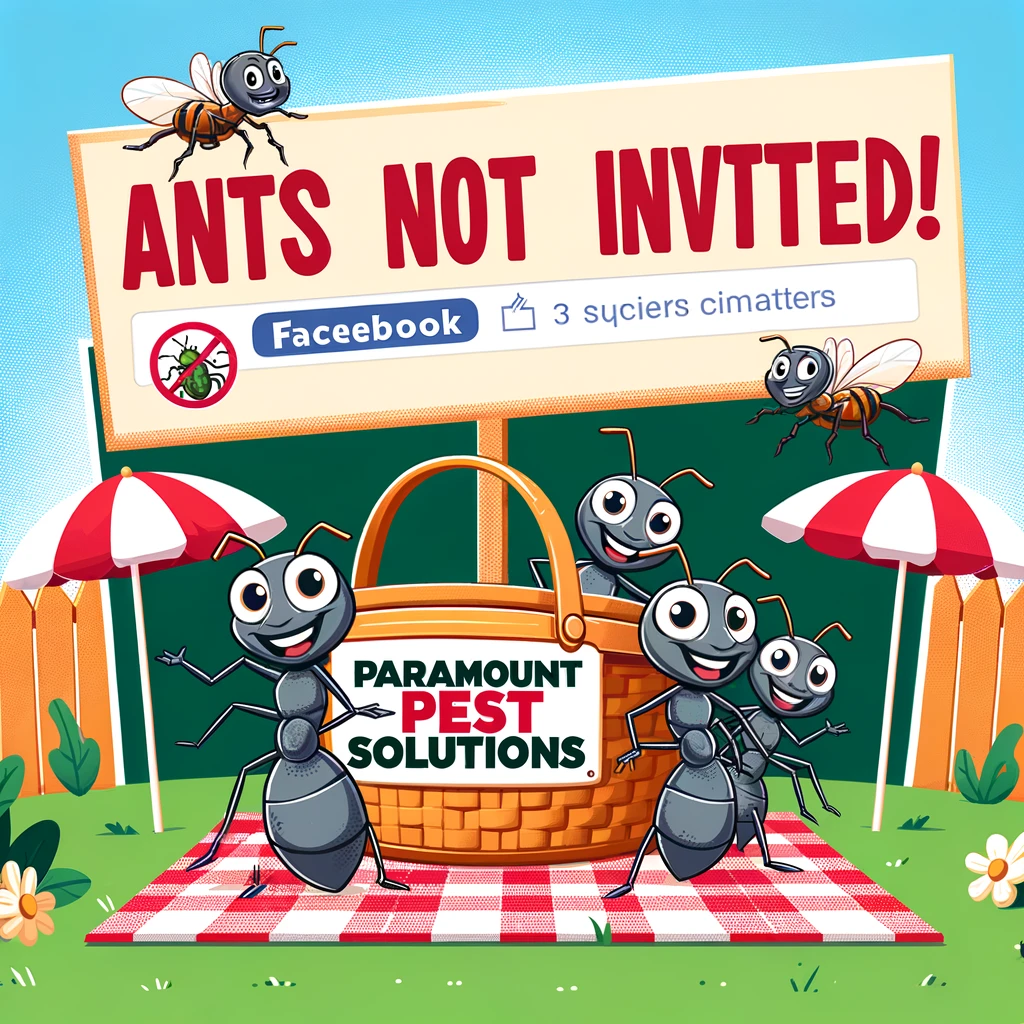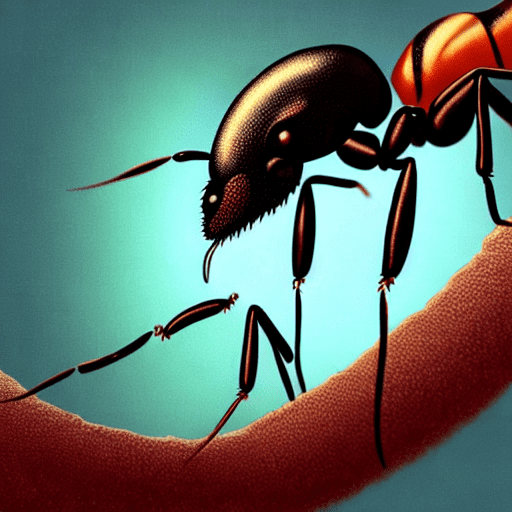
Ants are among the most common household pests, often appearing in large numbers and infiltrating homes in search of food and water. Understanding ant behavior is essential to effectively prevent infestations and maintain a pest-free environment. This guide will explore ant behavior and offer proven strategies to keep these persistent pests out of your home.
Ants are social insects that live in colonies, which can range from a few dozen to millions of individual ants. Their cooperative behavior and complex communication systems make them efficient foragers and formidable adversaries when trying to maintain a pest-free home.
Key Points Covered
- Understanding Ant Behavior and Communication
- Identifying Common Ant Species
- Effective Strategies for Ant Prevention
- Professional Ant Control Solutions
- How Paramount Pest Solutions Can Help
Glossary of Terms
- Pheromones: Chemical signals used by ants to communicate with one another, often used to mark trails or signal danger.
- Colony: A large group of ants that live and work together, typically consisting of a queen, workers, and drones.
- Foraging: The process of searching for food, which ants do collectively by following pheromone trails.
- Bait Stations: Devices used to attract ants with food laced with slow-acting insecticide, which they carry back to the colony to eliminate it.
- Exclusion: The practice of sealing entry points to prevent pests, such as ants, from entering a home or building.
Understanding Ant Behavior and Communication
Ants are highly organized creatures with complex social structures that revolve around their colonies. Each colony is typically divided into different castes, including workers, drones, and queens, each with specific roles.
- Communication: Ants communicate primarily through pheromones, which are chemical signals that convey messages such as food location, danger, or the presence of a mate. When a worker ant finds a food source, it lays down a pheromone trail that guides other ants from the colony to the food. This behavior leads to the familiar sight of ants marching in a line.
- Hierarchy: The queen is the colony’s primary reproductive individual, while worker ants gather food, care for the young, and maintain the nest. Drones, on the other hand, are male ants whose sole purpose is to mate with the queen.
- Adaptability: Ants are highly adaptable and can thrive in various environments. They often enter homes in search of food and water, especially during hot or dry weather when resources are scarce.
Understanding these behaviors is crucial for developing effective strategies to control and prevent ant infestations.

Identifying Common Ant Species and Unique Methods for Elimination
Different ant species may require unique strategies for control. Here are some common types of ants found in homes, along with specific methods for their elimination and prevention:
Argentine Ants
Characteristics and Behavior:
Argentine ants are known for forming massive colonies that can quickly dominate an area. They prefer moist environments and are particularly attracted to sweet foods. These ants can enter homes through tiny cracks and crevices.
Unique Elimination and Prevention Methods:
- Baiting: Use sugar-based baits with slow-acting insecticides. Argentine ants are highly attracted to sweet substances, making baiting an effective strategy. Place bait stations near trails and entry points to maximize effectiveness.
- Eliminating Moisture: Reduce moisture around the home by fixing leaks and ensuring proper drainage. Consider using dehumidifiers in damp areas to make the environment less attractive to these ants.
- Sealing Entry Points: Thoroughly inspect the exterior of your home and seal any cracks, crevices, or gaps around windows, doors, and foundations with caulk or weatherstripping.
Carpenter Ants
Characteristics and Behavior:
Carpenter ants are large ants that nest in wood, often causing structural damage. Unlike termites, they do not eat wood but hollow it out to create their nests. They are attracted to damp, decaying wood and are often found in areas with high humidity.
Unique Elimination and Prevention Methods:
- Wood Replacement and Repair: Remove and replace damp or decaying wood around your home to eliminate potential nesting sites. Ensure that wooden structures are well-ventilated to prevent moisture buildup.
- Direct Treatment: Use insecticidal dust or foam to treat carpenter ant nests directly. Drill small holes into infested wood and inject the insecticide to reach the entire nest.
- Trim Vegetation: Keep trees and shrubs trimmed away from your home to prevent ants from using branches as bridges to access your house.
Odorous House Ants
Characteristics and Behavior:
Odorous house ants emit a distinctive, rotten coconut-like odor when crushed. They are small, dark-colored ants that are attracted to sugary substances and often nest indoors, particularly in wall voids and beneath floors.
Unique Elimination and Prevention Methods:
- Vinegar and Essential Oils: Clean surfaces with a solution of vinegar or essential oils like peppermint and tea tree. These natural repellents disrupt pheromone trails and deter odorous house ants from entering your home.
- Baiting: Use protein- or sugar-based baits depending on the ants’ preference at the time. Place baits in areas where you see ant activity and trails.
- Maintaining Cleanliness: Regularly clean kitchen counters, floors, and pantry areas to remove food crumbs and spills. Store food in airtight containers to minimize attractants.
Pavement Ants
Characteristics and Behavior:
Pavement ants often nest under pavements and soil, entering homes in search of food. They are known for the small mounds of soil they leave on sidewalks and driveways. Pavement ants are attracted to greasy and protein-rich foods.
Unique Elimination and Prevention Methods:
- Granular Baits: Use protein-based granular baits placed around entry points and near pavement cracks. Pavement ants are attracted to protein-rich foods, making granular baits an effective option.
- Soil Treatment: Apply insecticidal dust or granules to soil mounds and along pavement edges to target nests directly. This method helps eliminate colonies at their source.
- Pavement Sealing: Seal cracks in driveways, sidewalks, and foundations to prevent ants from nesting and gaining access to your home.
Fire Ants
Characteristics and Behavior:
Fire ants are recognized by their reddish color and aggressive behavior. They can deliver painful stings, which may cause allergic reactions in some individuals. Fire ants typically nest outdoors but can enter homes in search of food.
Unique Elimination and Prevention Methods:
- Two-Step Method: Use a combination of bait and contact insecticides. First, apply bait around mounds to attract worker ants. Afterward, treat the mound with a contact insecticide to eliminate the queen and remaining ants.
- Mound Drenching: Pour boiling water or insecticidal solutions directly onto fire ant mounds to eliminate colonies. This method is effective for small infestations and provides immediate results.
- Perimeter Treatment: Apply a barrier of insecticide around your home’s foundation and yard to prevent fire ants from establishing new colonies. This method creates a protective zone that deters fire ants from entering your property.
Understanding the specific behaviors and preferences of each ant species is essential for implementing effective control strategies. By tailoring your approach to the unique characteristics of the ants you are dealing with, you can more efficiently eliminate and prevent infestations.

Effective Strategies for Ant Prevention
Preventing ant infestations begins with understanding their behavior and implementing proactive measures:
- Sealing Entry Points: Inspect your home for potential entry points such as cracks in the foundation, gaps around windows and doors, and utility lines. Use caulk or weatherstripping to seal these openings.
- Eliminating Food Sources: Store food in airtight containers and clean up spills and crumbs promptly. Keep pet food sealed and avoid leaving dirty dishes in the sink.
- Removing Water Sources: Fix leaky faucets and pipes to reduce moisture that attracts ants. Ensure that gutters and downspouts direct water away from the home’s foundation.
- Using Natural Repellents: Certain essential oils, such as peppermint, tea tree, and citrus, can deter ants. Create a solution by mixing these oils with water and spraying it around entry points and infested areas.
- Implementing Barriers: Use diatomaceous earth or commercial ant repellents to create barriers that prevent ants from entering your home. Apply these substances around the perimeter of your home and in areas where ants are active.
Professional Ant Control Solutions
While DIY methods can be effective, persistent or severe ant infestations often require professional intervention. Here are some benefits of professional ant control:
- Expert Assessment: Professionals can accurately identify the ant species and determine the extent of the infestation, allowing for targeted treatment.
- Advanced Treatments: Professional pest control services use advanced products and techniques, such as baiting systems, that are more effective and longer-lasting than over-the-counter solutions.
- Preventative Measures: In addition to eliminating current infestations, professionals can provide ongoing preventative treatments to keep ants from returning.
- Safety and Efficiency: Professionals ensure that treatments are applied safely and effectively, minimizing risks to your family and pets.
At Paramount Pest Solutions, we offer comprehensive ant control services tailored to your specific needs. Our team of experienced professionals uses eco-friendly methods to ensure effective and safe pest management. Learn more about our Services and how we can help protect your home.
Common Ant Species and Their Habits
| Ant Species | Habitat | Food Preferences | Distinctive Characteristics |
| Argentine Ants | Moist environments | Sugary foods | Large colonies |
| Carpenter Ants | Wood structures | Proteins, sugars | Nest in wood, large size |
| Odorous House Ants | Wall voids, beneath floors | Sugary substances | Emit an odor when crushed |
| Pavement Ants | Under pavements, soil | Grease, proteins | Soil mounds on driveways |
| Fire Ants | Outdoors, near foundations | Proteins, oily foods | Painful sting, aggressive behavior |
Fun Facts About Ants
- Super Strength: Ants can lift objects up to 50 times their own body weight, showcasing their incredible strength and cooperative behavior.
- Global Presence: Ants are found on every continent except Antarctica, adapting to a wide range of climates and environments.
- Farming Ants: Some ant species, like leafcutter ants, engage in agriculture by cultivating fungi as their primary food source.
- Ant Supercolonies: Some ants form massive supercolonies, stretching across vast areas with interconnected nests, housing millions of individuals.
- Long-Lived Queens: Queen ants can live for decades, continuing to produce eggs and ensuring the colony’s survival for many years.
Frequently Asked Questions
- How do I know if I have an ant infestation?
Look for trails of ants, especially near food sources, and inspect for entry points or nests around your home. - What should I do if I see a few ants in my house?
Act quickly to eliminate them by cleaning the area and removing any food sources, then seal entry points to prevent further access. - Are natural repellents effective against ants?
Yes, essential oils like peppermint and citrus can deter ants, but they may not completely eliminate an established infestation. - When should I contact a professional pest control service?
If you have a persistent or large-scale infestation, or if DIY methods are ineffective, it’s time to seek professional help. Contact Paramount Pest Solutions for a thorough assessment and tailored solution. - How can I prevent ants from returning after treatment?
Maintain a clean environment, regularly inspect for potential entry points, and consider preventative treatments from professional pest control services. - Can ants cause structural damage to my home?
While most ants do not cause structural damage, carpenter ants can weaken wooden structures by creating nests within them. - Are ants dangerous to humans?
Most ants are not dangerous, but some, like fire ants, can sting and cause allergic reactions in sensitive individuals. - How long does it take to eliminate an ant infestation?
The time it takes depends on the severity of the infestation and the treatment method used. Professional services can expedite the process with effective solutions. - Do ant baits work for all species?
Ant baits are effective for many species, but their success depends on proper placement and the specific dietary preferences of the ants in question. - Are there eco-friendly options for ant control?
Yes, many professional pest control services, including Paramount Pest Solutions, offer eco-friendly treatments that effectively manage ant infestations while minimizing environmental impact.

Keep Your Home Ant-Free with Paramount Pest Solutions
Maintaining an ant-free home is essential for a comfortable and healthy living environment. Paramount Pest Solutions offers expert ant control services designed to meet your specific needs. Our team of experienced professionals utilizes proven strategies and eco-friendly methods to effectively manage and prevent ant infestations. Don’t let ants disrupt your home—contact us today to schedule an inspection and discover how we can keep your home pest-free.
Paramount Pest Solutions is proud to serve Gulfport, Biloxi, Ocean Springs, Pascagoula, D’Iberville, and surrounding areas. Visit our Service Areas page to learn more about the communities we serve and how we can assist you.
